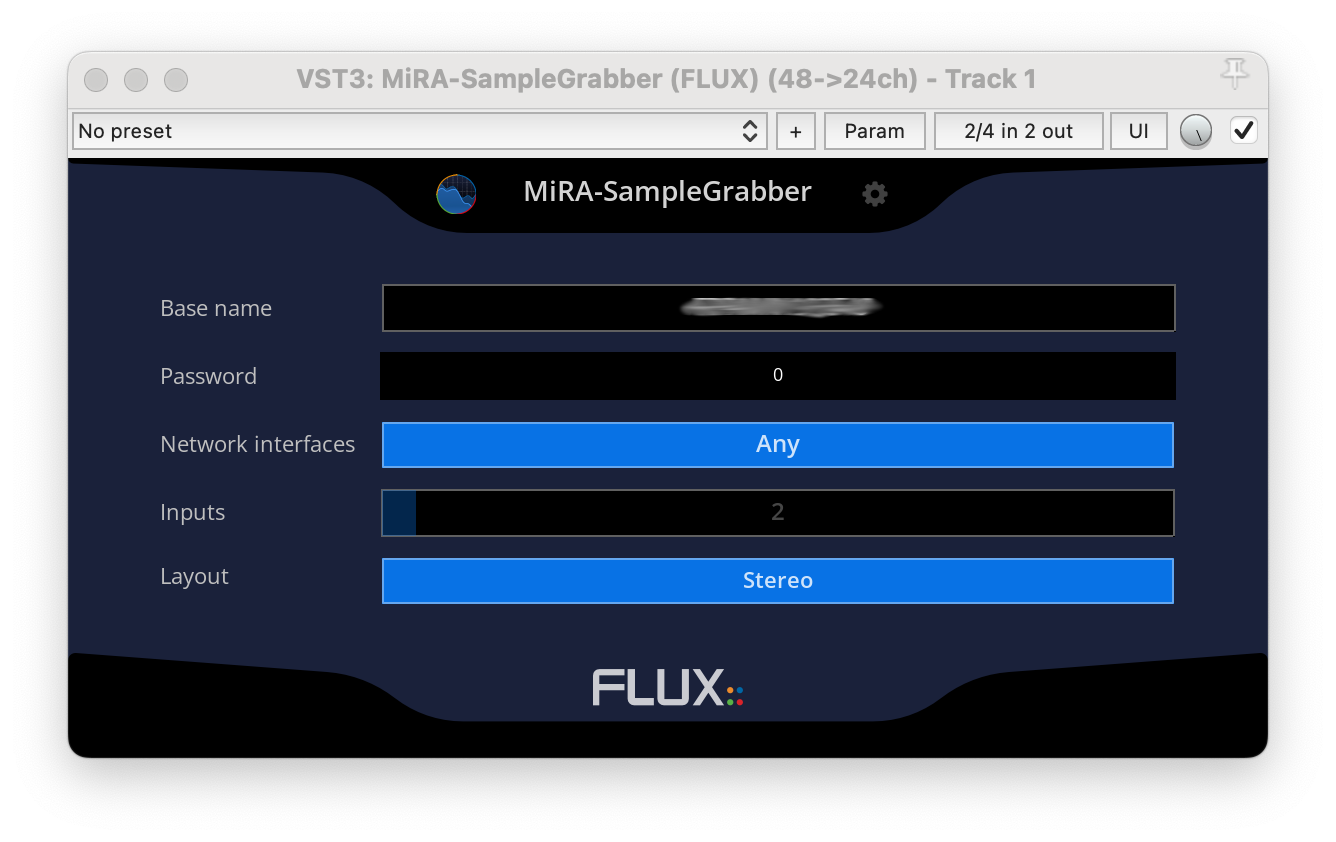SamplePush Technology - SampleGrabber
Principle of operation
The FLUX:: MiRA application allows for complete separation of signal acquisition from analysis for maximum flexibility. To make this possible, FLUX:: has developed a proprietary solution to send audio through a local network. It is called SamplePush and it leverages the usage of ZeroConf/Apple Bonjour protocol to make the whole setup a breath. Finally, the FLUX:: MiRA standalone application receives the sample feed(s) and analyzes them.
At this point in time, there are two products that have the capability to send audio samples using SamplePush : the SampleGrabber plugin and SPAT Revolution. The rest of this page will focus on the SampleGrabber only. Please consult the documentation of SPAT Revolution for more details about the possible integration with MiRA.
SampleGrabber is a multichannel capable plug-in, available in all common formats (AAX, AU, VST and VST3), whose channel configuration is set automatically according to the channels number. The displayed layouts list is filtered by the “Layout category” chosen, clicking on the  icon. This category is automatically chosen according to the DAW.
icon. This category is automatically chosen according to the DAW.
The FLUX:: MiRA application displays in the audio source menu a list of SampleGrabber instances found on the network. Each instance is identified by the network name of associated computer on which it is running on. Clicking a name on the list will select the corresponding SampleGrabber for input.
You can insert up to 64 instances of SampleGrabber plugins inside one same DAW, and up to 64 FLUX:: MiRA instances can be connected to any SampleGrabber instance over the network. A SampleGrabber can be connected to up to 64 FLUX:: MiRA instances over the network. We do, however, recommend limiting the number of instances in order to avoid saturating the network.
Network configuration
Network configuration is completely automatic and transparent, thanks to the use of the ZeroConf/Apple Bonjour protocol. Should you encounter any problems with your connection, we advise you to check whether the UDP port range from 46000 to 46064 is opened in your firewall, for both incoming and outgoing connections.
Audio transport requires approximately 1.4 Mbps for each channel at a sample rate of 44.1kHz, whereas a 5.1 configuration at 96kHz demands a little less than 20 Mbps. A properly functioning standard Ethernet 100 Mbps network should, therefore, be more than sufficient to handle most scenarios.
The above bandwidth requirements naturally do not apply when using both SampleGrabber and FLUX:: MiRA on the same machine.
Please check with your network administrator if you have any bandwidth issues and/or special requirements.
Password
An optional password, which is a simple 4-digit number, allows you to apply light encryption to the audio stream for secure transmission over the network. It is set to 0 by default, which turns off encryption; in this case, no additional action in the FLUX:: MiRA application is required on your part.
If you wish to employ and define a password in SampleGrabber, please enter a matching value in the SampleGrabber menu of the FLUX:: MiRA application in order to be able to decrypt the incoming stream.
Please note that the security level provided by this encryption is mild, and is only intended to protect from anyone eavesdropping your audio stream inside the internal network. It is not intended as a substitute for conventional network security practices and measures such as software and hardware firewalls, etc.
